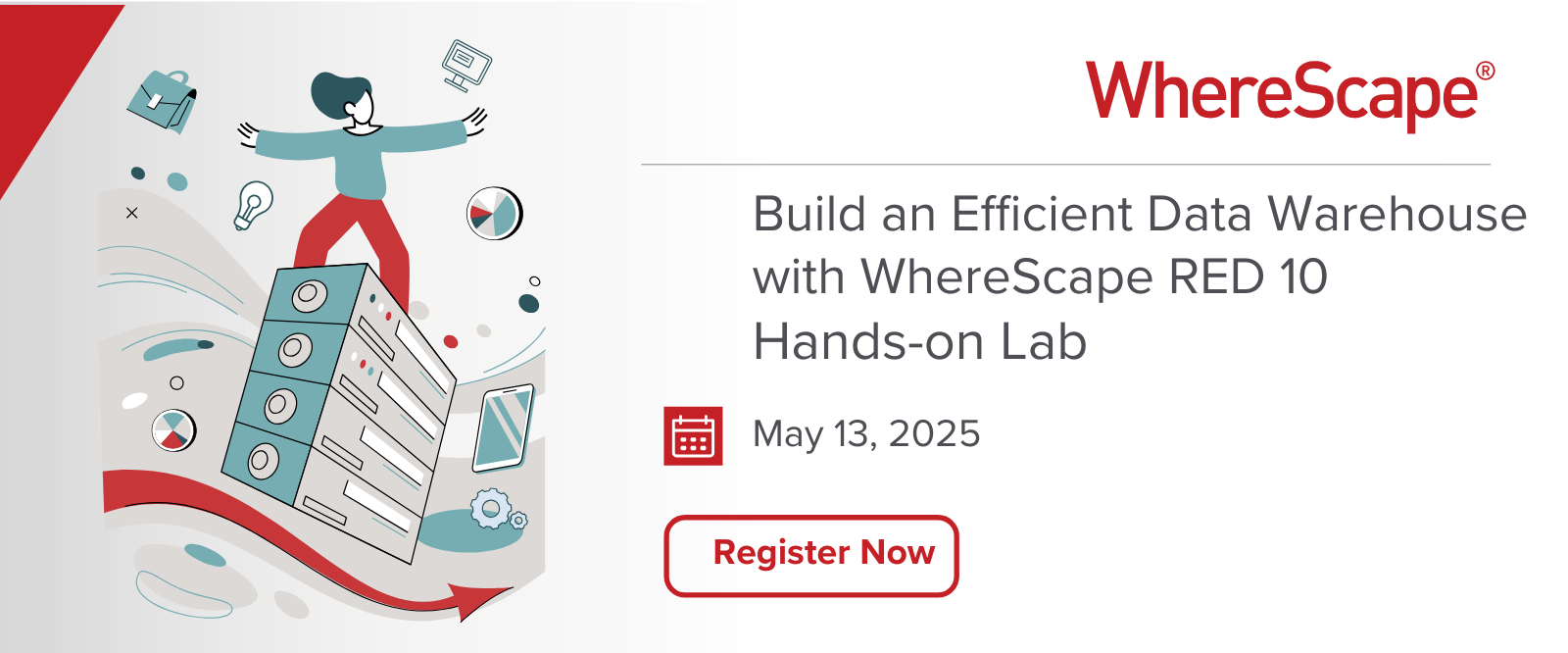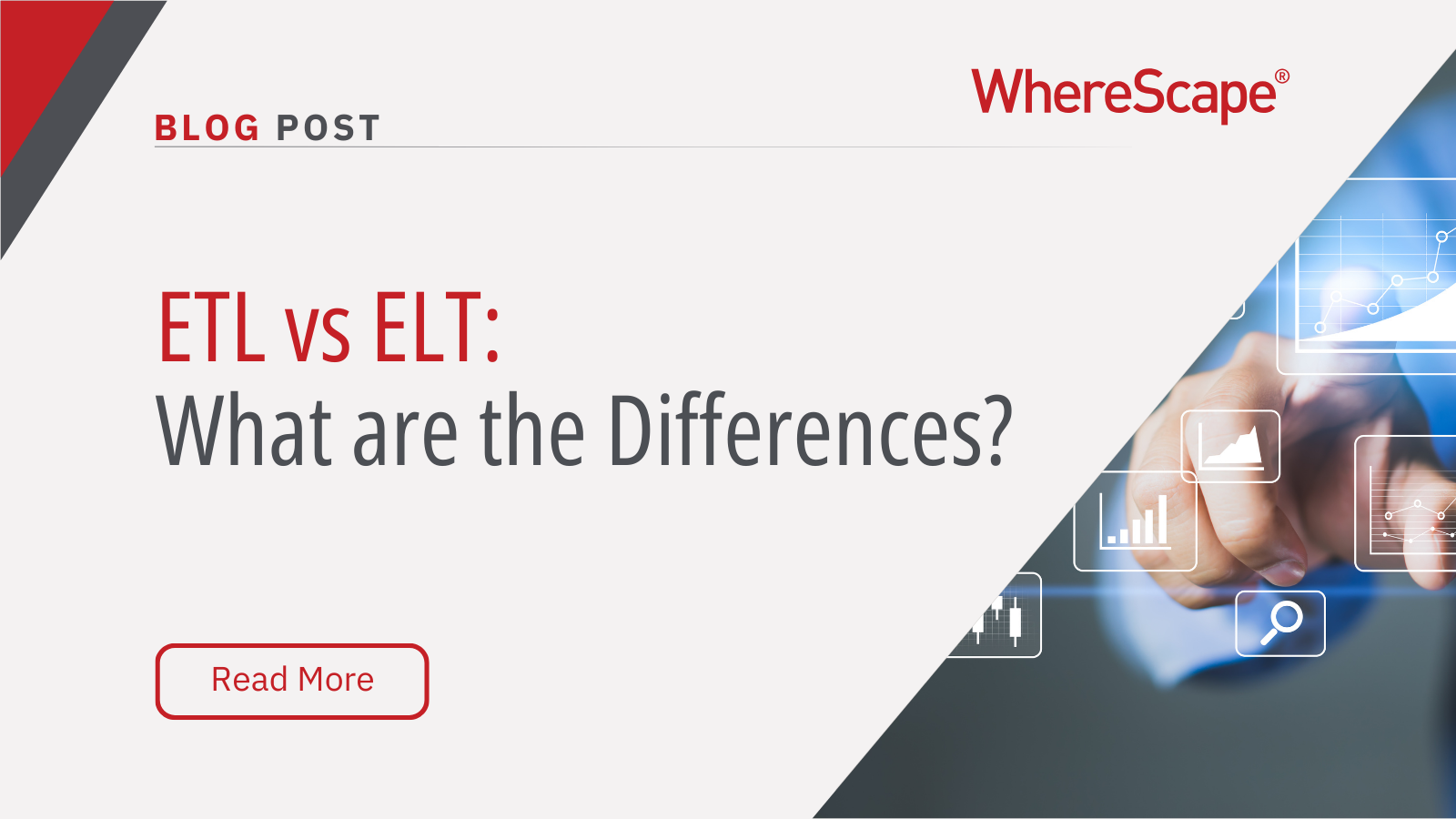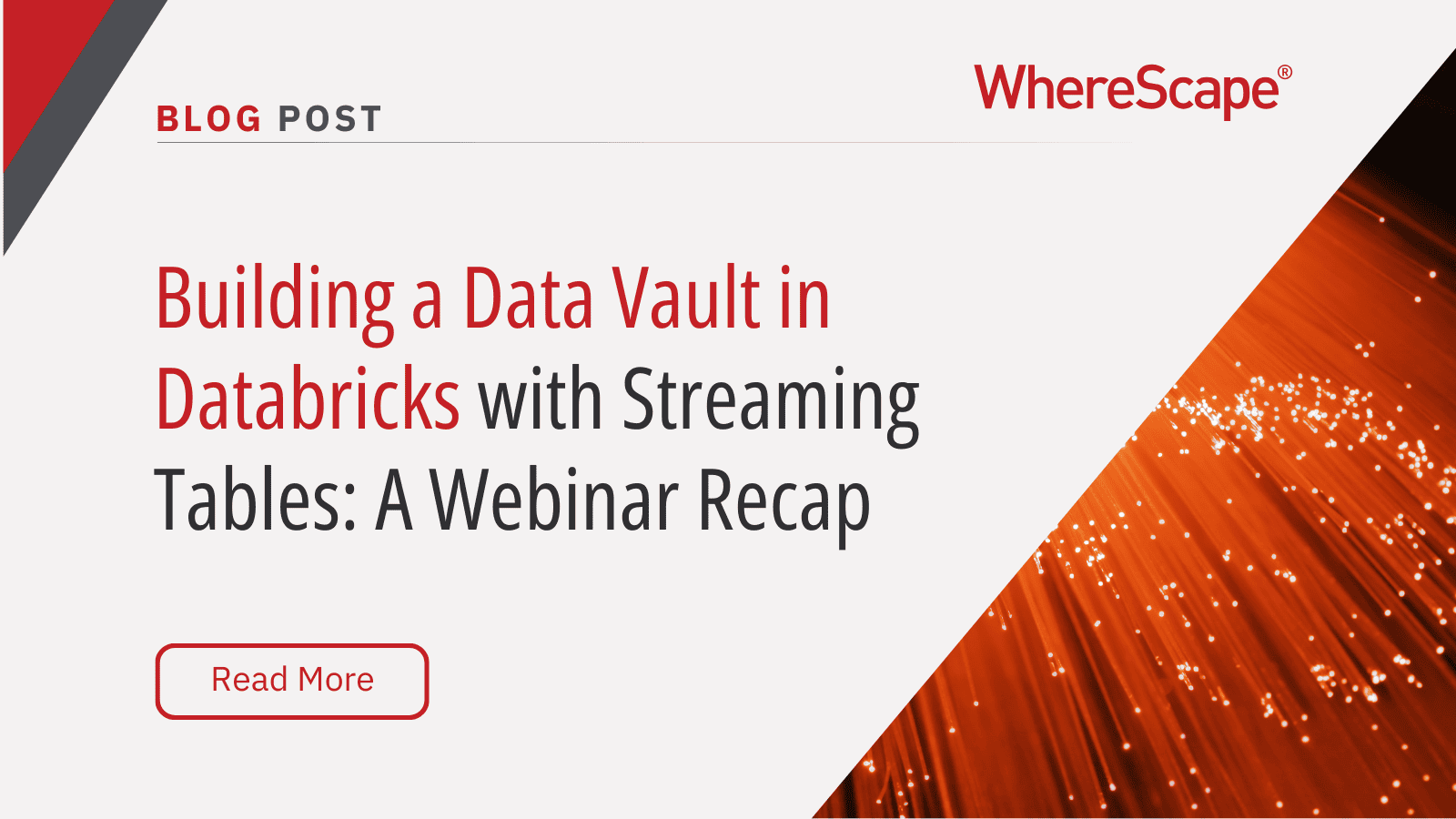Tune in for a free, live virtual hands-on lab...
Efficient Processing Techniques for JSON and Parquet Semi-Structured Data
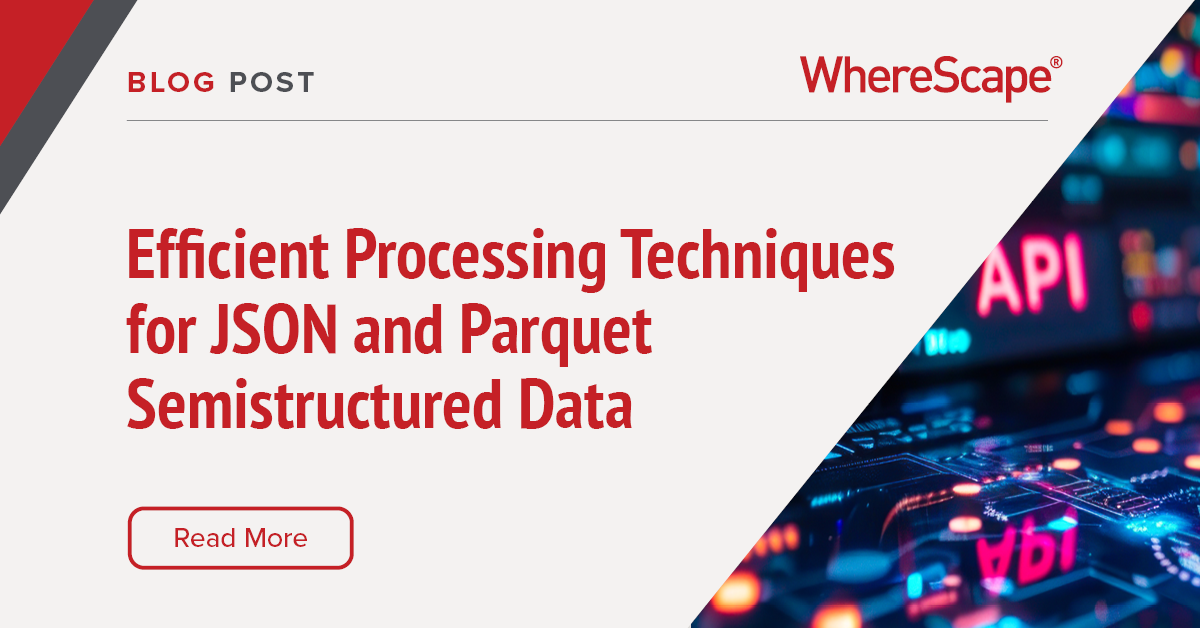
Introduction to Semi-Structured Data and Its Importance
Semi-structured data sits on the spectrum somewhere between traditional database tables and unstructured data. It has organizational properties that make it easier to analyze than raw text, but it doesn’t fit into traditional databases. JSON and Parquet are both examples of semi-structured data.
Semi-structured data stands out for its flexibility and ease of use. Leveraging semi-structured data is essential because it enables businesses to derive actionable insights from complex data sources like logs, IoT devices, and social media interactions, which don’t fit into traditional database structures.
The Role of JSON Data in Today’s Data-Driven World
JSON (JavaScript Object Notation) is a lightweight that is often used because of its flexibility, readability, and widespread support. Because it creates human-readable text to represent complex data hierarchies, it is indispensable in web development and beyond.
A few common applications of JSON data include web APIs and real-time data feeds. JSON facilitates the seamless integration and communication of complex data structures across a diverse array of systems and applications.
Deep Dive: JSON vs. Parquet for Semi-Structured Data
The specific needs of your data application will dictate whether JSON or Parquet is a better fit for your semi-structured data handling. On the one hand, JSON’s strengths lie in its flexibility and ease of use. It is particularly useful for lightweight messaging and web data because of its text-based format.
On the other hand, Parquet is designed with efficiency in mind. Its efficiency of data storage and its high-speed retrieval capabilities make it ideal for large-scale analytics platforms.
Analyzing the Strengths and Weaknesses of JSON
Coming to a deep understanding of the strengths and weaknesses of JSON can help data teams better understand their best options for semi-structured data handling.
Strengths of JSON include:
- Simplicity
- Human readability
- Accessibility in web contexts
- Supports a wide range of data types
- Easy to integrate with many programming languages
On the other hand, weaknesses of JSON include:
- Lack of storage efficiency for large datasets
- Significant overhead due to verbose nature
- Slows down processing
- Increased storage costs
- Not suitable for large-scale analytics platforms
The Advantages of Using Parquet for Data Storage and Analysis
The advantages of Parquet vs JSON mainly focus on applications involving large volumes of semi-structured data. These advantages include:
- A columnar storage format
- Efficient data compression and encoding schemes
- Reduced storage footprint
- Support for advanced optimization techniques such as predicate pushdown
- Query performance
Overall, Parquet is the superior choice when it comes to large-scale analytical workloads.
Transitioning from JSON to Parquet for Data Efficiency
Transitioning from JSON to Parquet can significantly enhance data efficiency, particularly for big data applications. Parquet is a columnar storage file format that offers optimized data compression and encoding schemes. This reduces storage needs and improves read/write speeds, which is especially beneficial for analytics. Overall, Parquet allows for faster querying and data retrieval, which are crucial for efficiently handling large-scale data sets.
Understanding the Conversion from JSON to Parquet
The conversion from JSON to Parquet is a pivotal process for data efficiency. This transition brings a focus to changing formats as well as embracing a more structured, efficient approach to data storage and analysis.
The Technicalities of JSON and Parquet in Data Processing
In order to implement efficient processing practices, data teams must consider the technicalities of JSON and Parquet in Data Processing. JSON is predominantly used in data interchange. In order to manage its hierarchical structure and lack of indexing, it requires careful handling or else performance may be affected.
With Parquet, data teams encounter encoding capabilities that help efficiently process large datasets. Parquet uses a binary file format that also allows for complex nested data structures.
Key Techniques for Managing JSON Data Effectively
In order to effectively manage JSON data, data teams can then take following steps:
- Validate schema
- Use efficient parsing libraries to ensure the speed and integrity of all data
- Implement caching mechanisms
- Leverage stream processing to minimize resource utilization
Optimizing Data with Parquet: Best Practices
For Parquet, the focus shifts to optimizing data through compression and encoding, enhancing read/write efficiency and enabling faster insights from analytical queries. Strategies for data optimization with Parquet include:
- Align data schema with query patterns
- Take advantage of Parquet’s columnar storage format by organizing data such that frequently accessed columns are easily retrievable.
- Implement partitioning of data files based on key attributes that are often used in queries to facilitate faster data retrieval.
- Cluster data within partitions around frequently accessed columns to further enhance query performance.
- Periodically merge smaller Parquet files into larger ones to reduce the overhead associated with managing numerous small files.
- Utilize Parquet’s support for predicate pushdown to perform filtering at the storage level.
- Implement indexing strategies where possible to speed up data retrieval for specific types of queries.
Harnessing the Full Potential of Semi-Structured Data

Organizations can adopt integrated data automation systems like WhereScape in order to fully harness the potential of semi-structured data. WhereScape helps streamline the integration and management of complex data systems, facilitating rapid deployment. With WhereScape’s automation tools, organizations can reduce manual coding time and efficiently extract actionable insights from their data.
With customizable visualization tools, businesses can turn complex data tasks into clear information while maintaining data integrity. This approach enhances decision-making and operational efficiency through automated, intelligent data handling.
Leveraging Webcasts for Advanced Learning: “Efficient Processing Techniques for JSON and Parquet Semi-Structured Data”
Finding educational webcasts can help data teams better understand the nuances of processing techniques and semi-structured data and apply key techniques in their data workflows.
Enhance Your Skills with Our Detailed Webcast
For in-depth demonstrations of the contents of this article as well as practical insights for efficiently processing JSON and Parquet semi-structured data, access our free webcast.
ETL vs ELT: What are the Differences?
In working with hundreds of data teams through WhereScape’s automation platform, we’ve seen this debate evolve as businesses modernize their infrastructure. Each method, ETL vs ELT, offers a unique pathway for transferring raw data into a warehouse, where it can be...
Dimensional Modeling for Machine Learning
Kimball’s dimensional modeling continues to play a critical role in machine learning and data science outcomes, as outlined in the Kimball Group’s 10 Essential Rules of Dimensional Modeling, a framework still widely applied in modern data workflows. In a recent...
Automating Data Vault in Databricks | WhereScape Recap
Automating Data Vault in Databricks can reduce time-to-value by up to 70%—and that’s why we hosted a recent WhereScape webinar to show exactly how. At WhereScape, modern data teams shouldn't have to choose between agility and governance. That's why we hosted a live...
WhereScape Recap: Highlights From Big Data & AI World London 2025
Big Data & AI World London 2025 brought together thousands of data and AI professionals at ExCeL London—and WhereScape was right in the middle of the action. With automation taking center stage across the industry, it was no surprise that our booth and sessions...
Why WhereScape is the Leading Solution for Healthcare Data Automation
Optimizing Healthcare Data Management with Automation Healthcare organizations manage vast amounts of medical data across EHR systems, billing platforms, clinical research, and operational analytics. However, healthcare data integration remains a challenge due to...
WhereScape Q&A: Your Top Questions Answered on Data Vault and Databricks
During our latest WhereScape webinar, attendees had fantastic questions about Data Vault 2.0, Databricks, and metadata automation. We’ve compiled the best questions and answers to help you understand how WhereScape streamlines data modeling, automation, and...
What is Data Fabric? A Smarter Way for Data Management
As of 2023, the global data fabric market was valued at $2.29 billion and is projected to grow to $12.91 billion by 2032, reflecting the critical role and rapid adoption of data fabric solutions in modern data management. The integration of data fabric solutions...
Want Better AI Data Management? Data Automation is the Answer
Understanding the AI Landscape Imagine losing 6% of your annual revenue—simply due to poor data quality. A recent survey found that underperforming AI models, built using low-quality or inaccurate data, cost companies an average of $406 million annually. Artificial...
RED 10: The ‘Git Friendly’ Revolution for CI/CD in Data Warehousing
For years, WhereScape RED has been the engine that powers rapidly built and high performance data warehouses. And while RED 10 has quietly empowered organizations since its launch in 2023, our latest 10.4 release is a game changer. We have dubbed this landmark update...
The Assembly Line for Your Data: How Automation Transforms Data Projects
Imagine an old-fashioned assembly line. Workers pass components down the line, each adding their own piece. It’s repetitive, prone to errors, and can grind to a halt if one person falls behind. Now, picture the modern version—robots assembling products with speed,...
Related Content
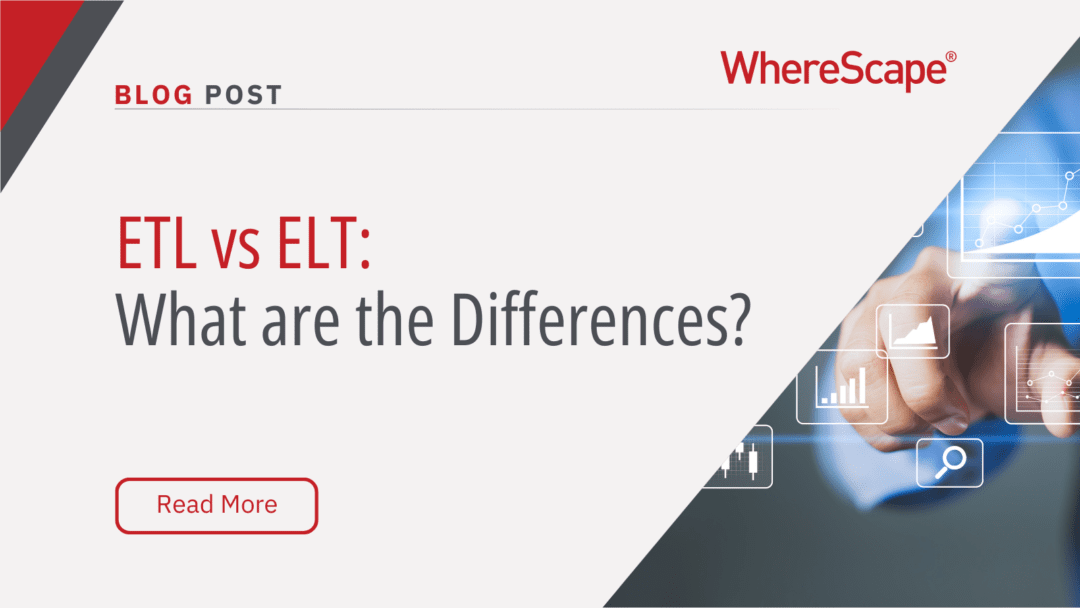
ETL vs ELT: What are the Differences?
In working with hundreds of data teams through WhereScape’s automation platform, we’ve seen this debate evolve as businesses modernize their infrastructure. Each method, ETL vs ELT, offers a unique pathway for transferring raw data into a warehouse, where it can be...
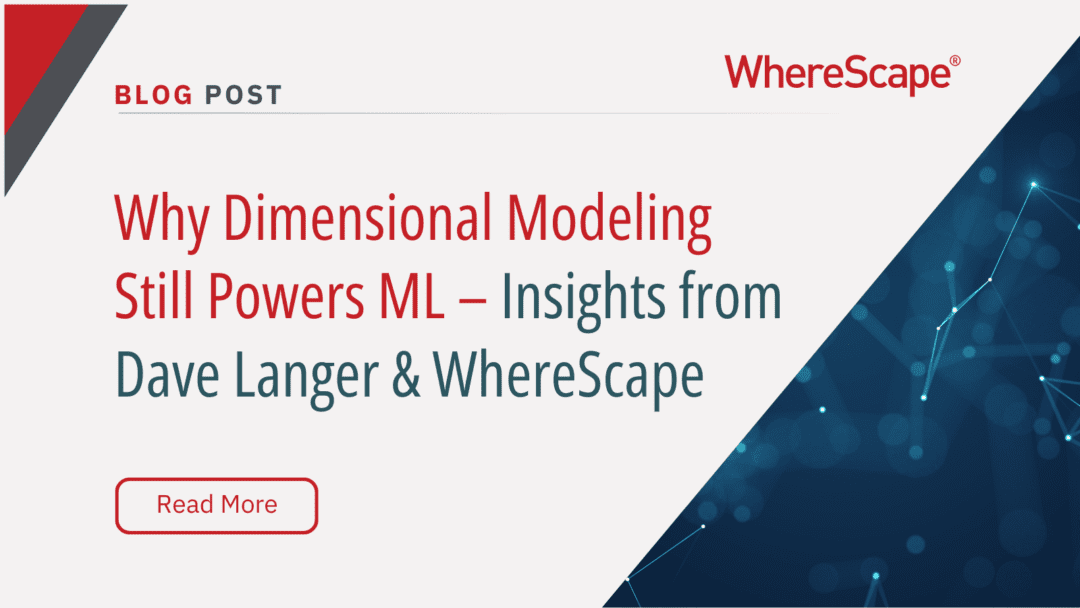
Dimensional Modeling for Machine Learning
Kimball’s dimensional modeling continues to play a critical role in machine learning and data science outcomes, as outlined in the Kimball Group’s 10 Essential Rules of Dimensional Modeling, a framework still widely applied in modern data workflows. In a recent...
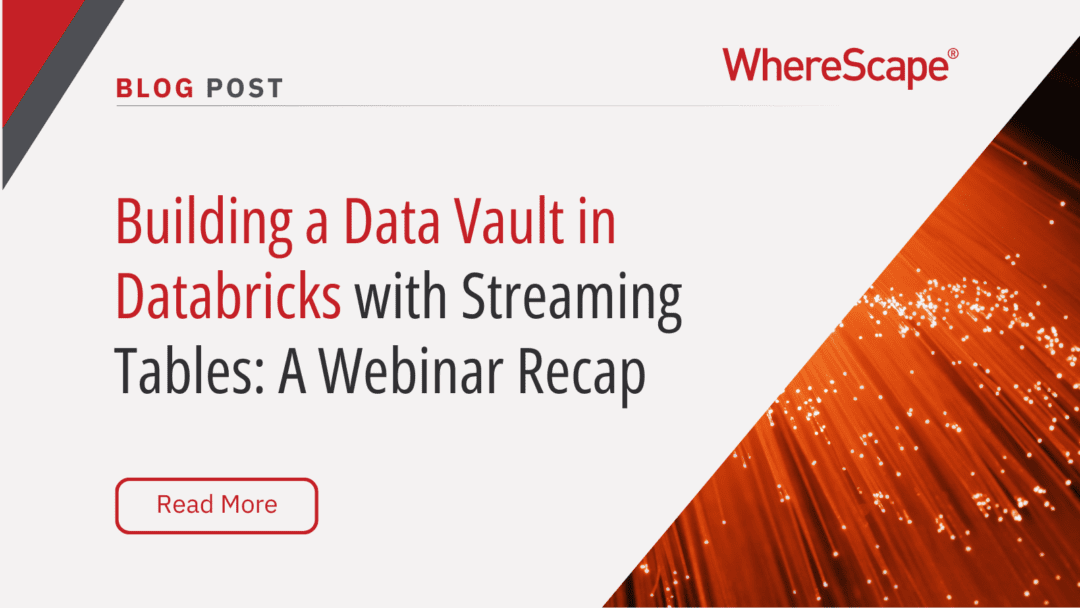
Automating Data Vault in Databricks | WhereScape Recap
Automating Data Vault in Databricks can reduce time-to-value by up to 70%—and that’s why we hosted a recent WhereScape webinar to show exactly how. At WhereScape, modern data teams shouldn't have to choose between agility and governance. That's why we hosted a live...

WhereScape Recap: Highlights From Big Data & AI World London 2025
Big Data & AI World London 2025 brought together thousands of data and AI professionals at ExCeL London—and WhereScape was right in the middle of the action. With automation taking center stage across the industry, it was no surprise that our booth and sessions...

